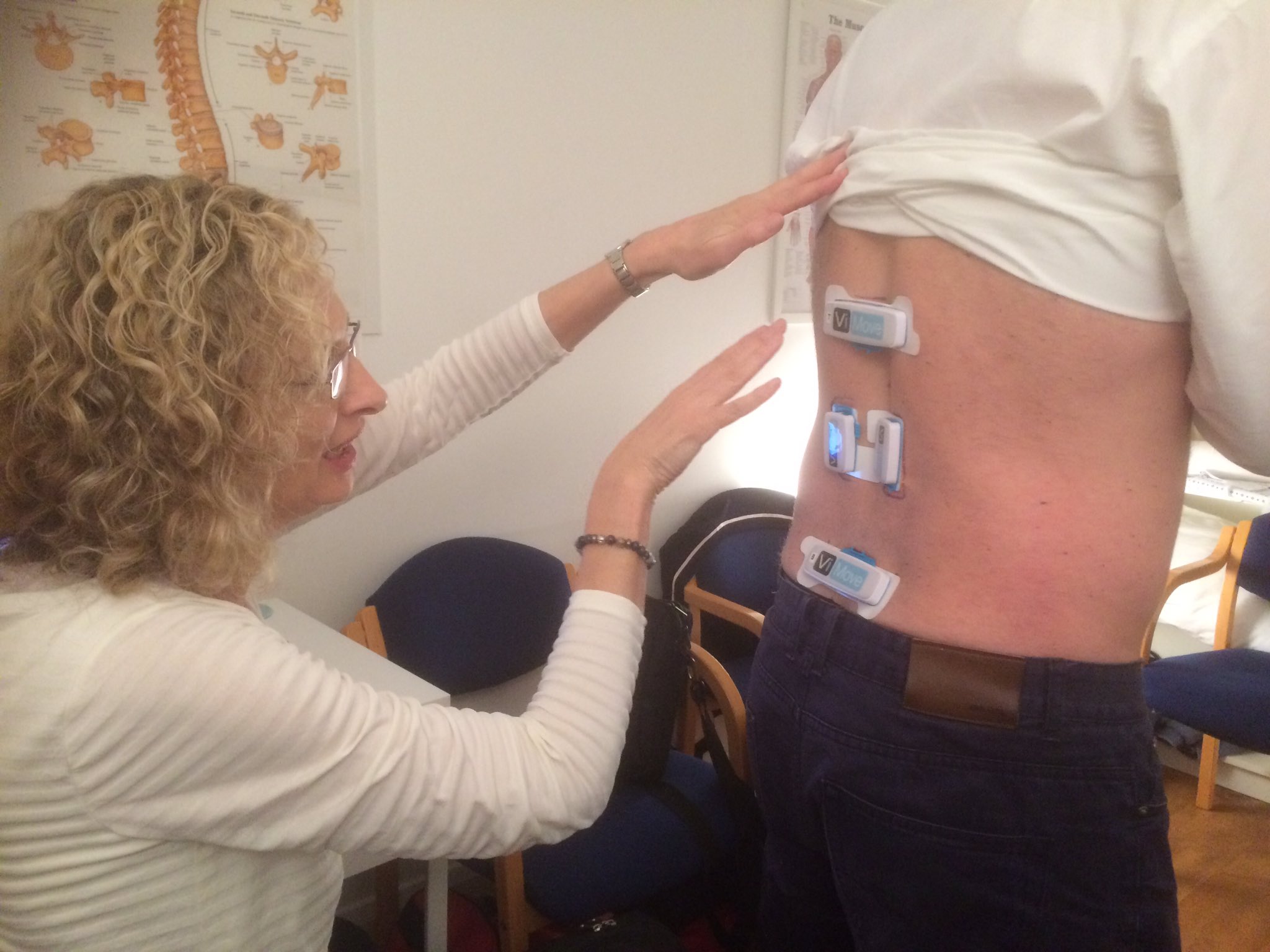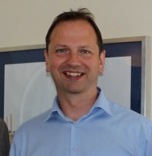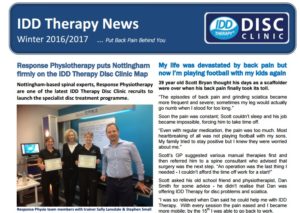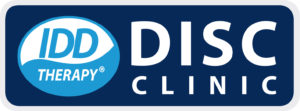When it comes to IDD Therapy Disc Treatment, it’s about relieving pain of course, but the main aim of the programme is to restore functional movement.
You might be interested to see something very few clinics do. This is my back and you might be thinking, yes, sensors. But unless you have seen these, trust me, you do not know what they do.
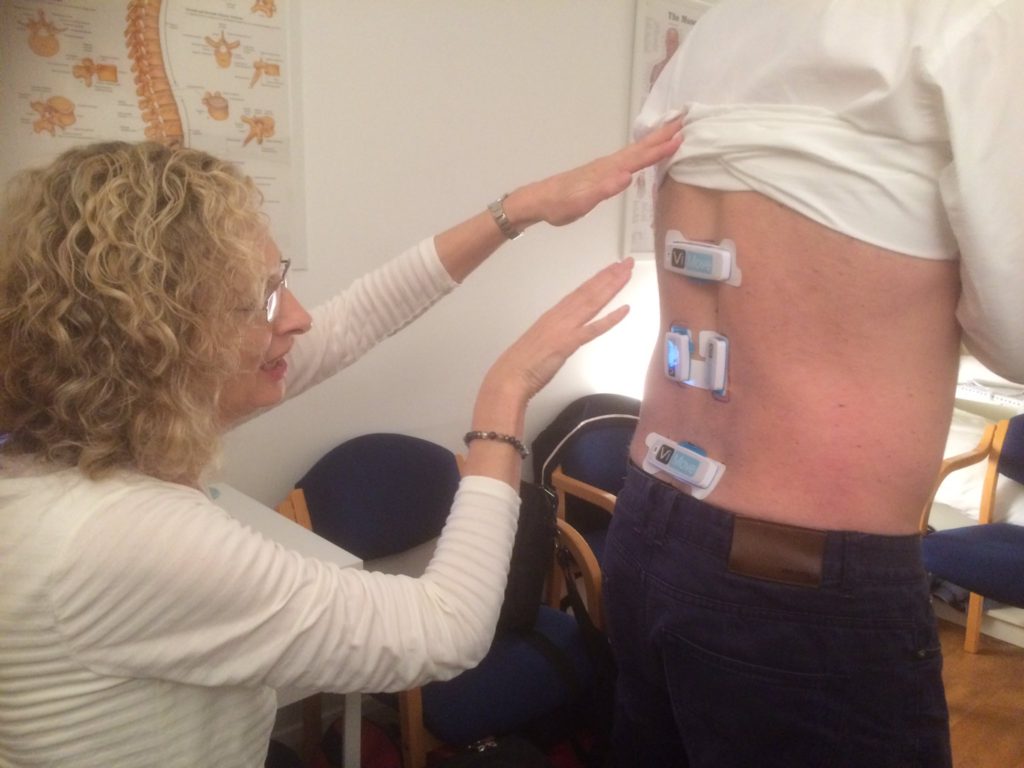
Clinical Director Sally Lansdale applying sensors to Stephen Small
These are wireless movement sensors with EMG and I’ll tell you why they are super cool. As co-owner of Spinex Disc Clinic in London our main focus is to help disc patients who need more than manual therapy and who do not want or are not candidates for surgery. We use IDD Therapy programmes extensively.
We introduced the gyroscopic sensors because they allow us to measure and record movements and function as well as capture objective data. A simple thing we do is to measure flexion, extension and side bending and we get a graphic and measurement to the nearest degree.
This helps us with the evaluation and it helps the patient see their problem. That is stage 1.
Thus, in order to prove our treatments beyond VAS and Oswestry, we can measure before during and after IDD Therapy to demonstrate change in movement – to the nearest degree.
So what? Well as an example, Vitality Insurance recently provided for 10 IDD treatments for a difficult patient. The patient needed additional treatments to complete the programme and because we were able to show the changes in movement, they funded an additional ten sessions straight away. (Aviva Insurance already reimburse IDD Therapy)
Ok, but this is basic stuff.
Next step is functional movement. We are expanding this with all our patients because we can put patients through a set of standard functional movements and show them precisely where they have asymmetries and dysfunction.
At the same time, the EMG lets us look at muscle firing activity – which with chronic back pain tends to be dysfunctional.
Thus the patient can really see hard data to support their condition AND this helps them understand our programmes and goals.
Stage 2 is treatment with IDD Therapy and rehab. My view is that academics love measurements, but the key issue is they don’t have the tools to bring about the changes we want to measure. This is what gets patients (and us!) excited.
Thus we are going to be doing functional movement assessments before, during and after the IDD Therapy programme using the system.
I know there are people who say we don’t need machines and gizmos. Fair enough. But if you are reading this on a smartphone, you will hopefully not be immune to a little irony 🙂 It’s all about the right tool for the right job. Interestingly when I asked our team to look at the sensors, they were reticent at first but they have embraced it because they see what it can do for the patients in the programme and how it helps them as clinicians.
Spinex was the first IDD Therapy clinic to adopt this and the first osteopathy clinic in the UK with the technology. Four other IDD Therapy providers are now using these wireless, gyroscopic movement sensors with the IDD Therapy. My job is to standardise the way they do it so we can collate meaningful data across the IDD Therapy Disc Clinic network. In the meantime, we just crack on and help the patients!
I look for the positives, at the same time, I expect we will also get patterns of when IDD isn’t bringing about change. That will help patient selection and manage expectations about when to expect changes.
EXPERIMENT
During a training last week, we were looking at the elements I describe here and I asked, has anyone used these DURING the IDD Therapy? Er, no. So, me being me I got rigged up and went on the IDD Therapy machine.
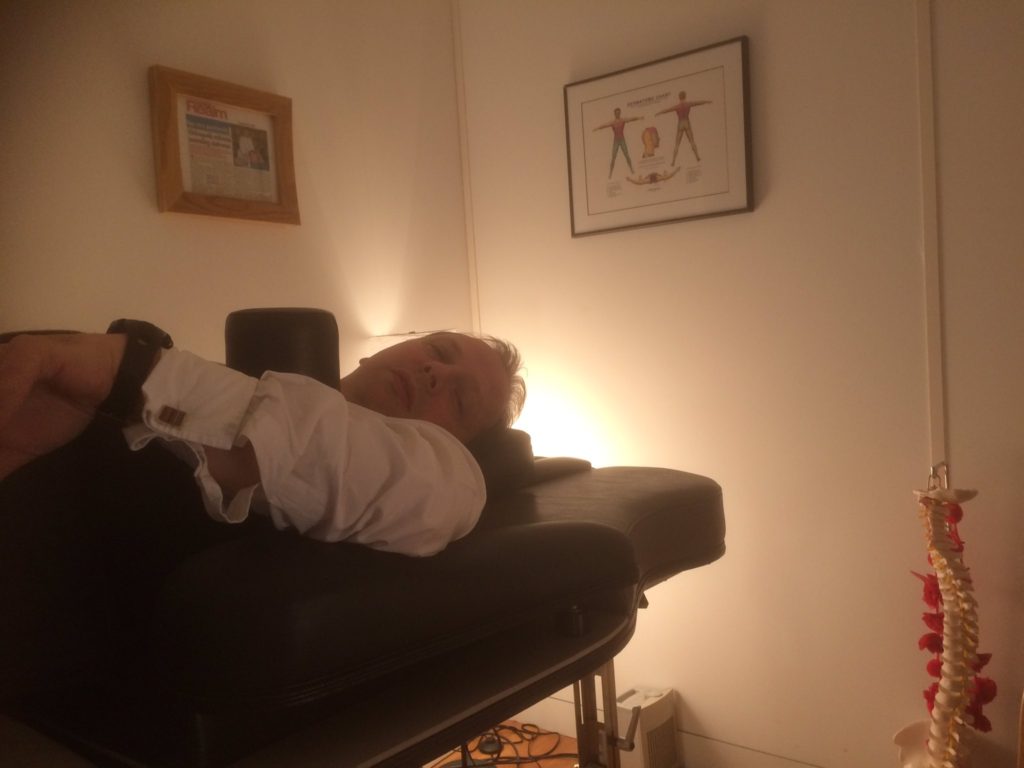
The results were really interesting. The muscles were not firing during decompression which was great and the sensors picked up the oscillation and the cyclic extension flexion, ranging from between 2 and 3 degrees.
When you get close to IDD Therapy, you will appreciate the significance of that. Of course, you don’t need to measure during treatment, that’s my job, it just shows the effect of the treatment.
Some other things we do with the sensors – we have patients wear them for 24 hours “24 hour monitoring”. The data shows us their entire movements, from how long they sit, whether they are in good posture of slumped, how much activity they do. We can show patients precisely how their daily lifestyle is often squashing the life out of their discs! And when they see the data, they are more likely to make changes.
We did this experiment off the cuff so it is a bit raw, but, nobody else is doing this. Hopefully by the time of the third IDD Therapy Provider Conference this year, we will have things nailed down for roll out. I recorded some videos and will post in due course.
I hope this is food for thought, we are changing conservative spine care.
Author: Stephen Small – Steadfast Clinics, IDD Therapy and Spinex Disc Clinic
Connect on linkedin www.linkedin.com/in/stephen-small-0b404718
Twitter: www.twitter.com/iddtherapyeuro (I follow back)

